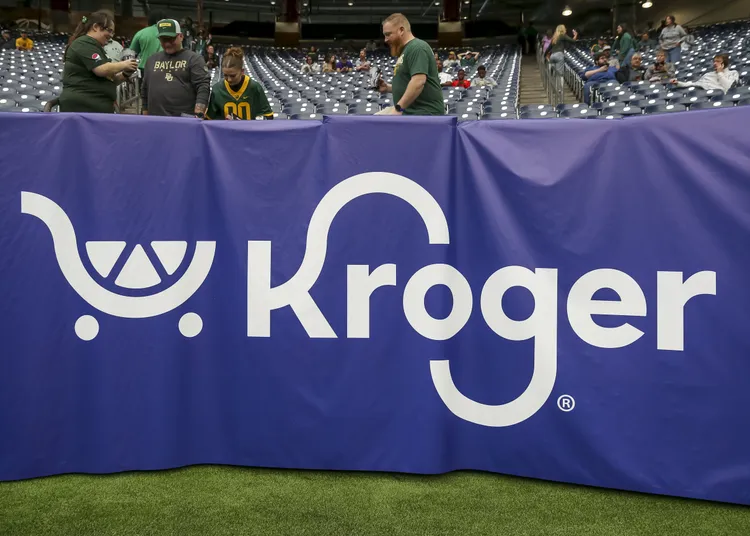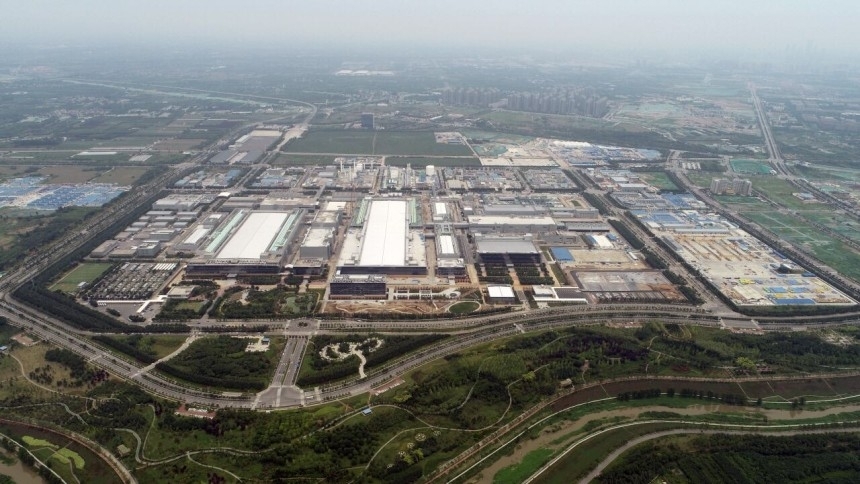The retail and automotive sectors received a much-needed jolt of energy today as Kroger and CarMax reported quarterly results that decisively beat Wall Street expectations. Both companies not only delivered robust earnings numbers but also revealed sharp strategic focus, effective cost control, and adaptability to changing consumer behavior. The result? A notable rise in investor confidence that helped lift broader equity markets amid ongoing macroeconomic caution.
🛒 Kroger Delivers a Fresh Earnings Surprise
Kroger, the giant in the U.S. grocery space, proved once again that essential retail remains a profit powerhouse when executed correctly. For the fiscal quarter ending May 24, Kroger posted a 3.2% increase in identical-store sales (excluding fuel), beating analyst expectations that hovered near 2.3%.
Revenue came in just shy of last year’s level, totaling $45.1 billion, while earnings per share (EPS) reached $1.49, comfortably exceeding the $1.45 estimate. The company also revised its full-year guidance, now expecting identical sales to rise between 2.25% and 3.25%, an upgrade from its prior 2%–3% forecast.
A critical pillar of Kroger’s success this quarter was the continued dominance of its private-label brand “Our Brands”, which outpaced national competitors for the seventh consecutive quarter. Consumers, grappling with inflation fatigue, are increasingly reaching for store-brand alternatives that offer value without sacrificing quality. This behavioral shift is turning into a serious margin booster for Kroger.
🧠 Strategy Over Scale: Kroger’s Smart Store Realignment
In a significant move aimed at long-term optimization, Kroger announced plans to close 60 underperforming stores while opening 30 new strategically located outlets. Rather than pursuing scale for its own sake, the grocer is zeroing in on profit-per-square-foot efficiency.
This deliberate refocus on location performance — in tandem with stronger e-commerce penetration, healthcare partnerships, and pharmacy expansion — is allowing Kroger to maintain steady cash flows even amid industry disruption.
Another positive note was Kroger’s share repurchase strategy, part of a previously announced $7.5 billion authorization, including a sizable accelerated buyback. That aggressive capital return policy, coupled with stable dividends, reinforces the stock’s attractiveness to long-term investors seeking yield and reliability.
📈 CarMax Cruises Past Expectations on Used-Car Strength
While Kroger impressed on the grocery front, CarMax delivered a surprise in the auto retailing sector, largely thanks to soaring used vehicle demand and operational agility. CarMax posted earnings of $1.38 per share, up a whopping 42% year-over-year, trouncing consensus estimates by over $0.20.
Total revenue surged to $7.55 billion, driven by a 9% increase in retail used car unit sales. That jump represents the highest growth in this segment since late 2021. What’s even more remarkable is that CarMax managed this acceleration while keeping wholesale prices relatively stable and improving gross margins.
Gross profit rose to $893.6 million, with a record $2,407 in gross profit per retail unit. These metrics highlight CarMax’s ability to execute in a highly competitive and rate-sensitive environment.
🔁 Omnichannel Model Pays Dividends for CarMax
CarMax’s standout performance wasn’t luck — it was the result of strong digital execution. The company’s omnichannel model allows customers to browse, finance, and purchase vehicles either online or in-store. This hybrid experience now influences over 80% of all retail transactions, proving that tech-enabled retail is more than just a convenience — it’s a strategic edge.
CEO Bill Nash emphasized that the company’s digital-first strategy, paired with smart inventory and pricing decisions, allowed CarMax to remain agile in an environment where consumers are still value-hunting due to persistent inflation and interest rate uncertainty.
CarMax’s auto-finance arm also played a role, with flexible credit offerings across a broad spectrum of customers. Although loan loss provisions increased slightly due to wider credit exposure, the overall segment remained a profit contributor rather than a liability.
⚠️ External Forces Add Momentum: Tariff Buzz Lifts Demand
CarMax may have had some unexpected help from geopolitical developments. The looming threat of 25% tariffs on foreign-made new vehicles led many cost-conscious buyers to explore the used car market. CarMax was perfectly positioned to absorb this redirected demand, which likely contributed to its strong Q1 performance.
While tariffs haven’t been confirmed, even speculation has ripple effects in consumer behavior, which smart retailers like CarMax are quick to capitalize on.
📊 Investor Reaction: Stocks Surge on Confidence
Following the earnings announcements, Kroger shares climbed approximately 9%, while CarMax rose between 5% and 10%, depending on timing and volume. These movements were among the top gainers in their respective sectors and reflected a renewed confidence in companies that can thrive even in economically tight conditions.
The broader equity markets benefited as well, as these results served as proof that select consumer-facing companies can beat expectations with the right mix of strategy, technology, and execution.
🧩 Key Takeaways: Why These Beats Matter
First, they show that consumers are not pulling back entirely — they’re just being more selective and value-driven. This trend benefits companies with flexible pricing structures, strong private-label offerings, and digital interfaces.
Second, both Kroger and CarMax are leaning hard into technology-driven models. Whether it’s digital grocery delivery or online vehicle sales, omnichannel ecosystems are emerging as the future of retail.
Third, these earnings reinforce the importance of strategic agility. By closing underperforming stores and refining inventory, both companies have shown that trimming the fat can lead to leaner, healthier profits.
💼 Insights for Business Owners, Investors & Analysts
If you’re watching the markets or managing your own business, these two stories offer clear signals:
Look for companies with core operational discipline. Those that invest in both cost control and customer experience tend to outperform during economic shifts.
Value continues to dominate consumer thinking — whether that means store brands in grocery or reliable used vehicles in auto.
Technology is no longer an optional upgrade — it’s a necessity. Businesses must offer frictionless digital experiences to capture and retain customers.
External macro shocks like tariffs or inflation can shift demand patterns quickly. Firms that stay nimble and anticipate these changes have the chance to outperform peers.
🔮 Forward Look: Can the Momentum Continue?
The big question now is sustainability. Kroger has a strong foundation in grocery, but it faces pressure from both inflation and discount retail competitors. CarMax is benefiting from current supply-chain dynamics, but rising delinquencies in auto loans could become a concern if rates stay elevated.
Still, with smart capital deployment, well-aligned strategy, and clear customer insight, both companies appear well-equipped to sustain momentum into the second half of 2025.
📌 Final Thoughts: Strategic Wins in a Challenging Climate
Kroger and CarMax didn’t just beat expectations — they sent a message to the market. With the right approach, it's possible to generate profit, grow market share, and reward investors even as the broader economy wobbles.
These earnings reports are more than financial results. They are playbooks in resilience, strategy, and execution. And they prove that opportunity still exists for those ready to adapt, pivot, and perform.
Stay tuned — the story is far from over.

















Comments 0